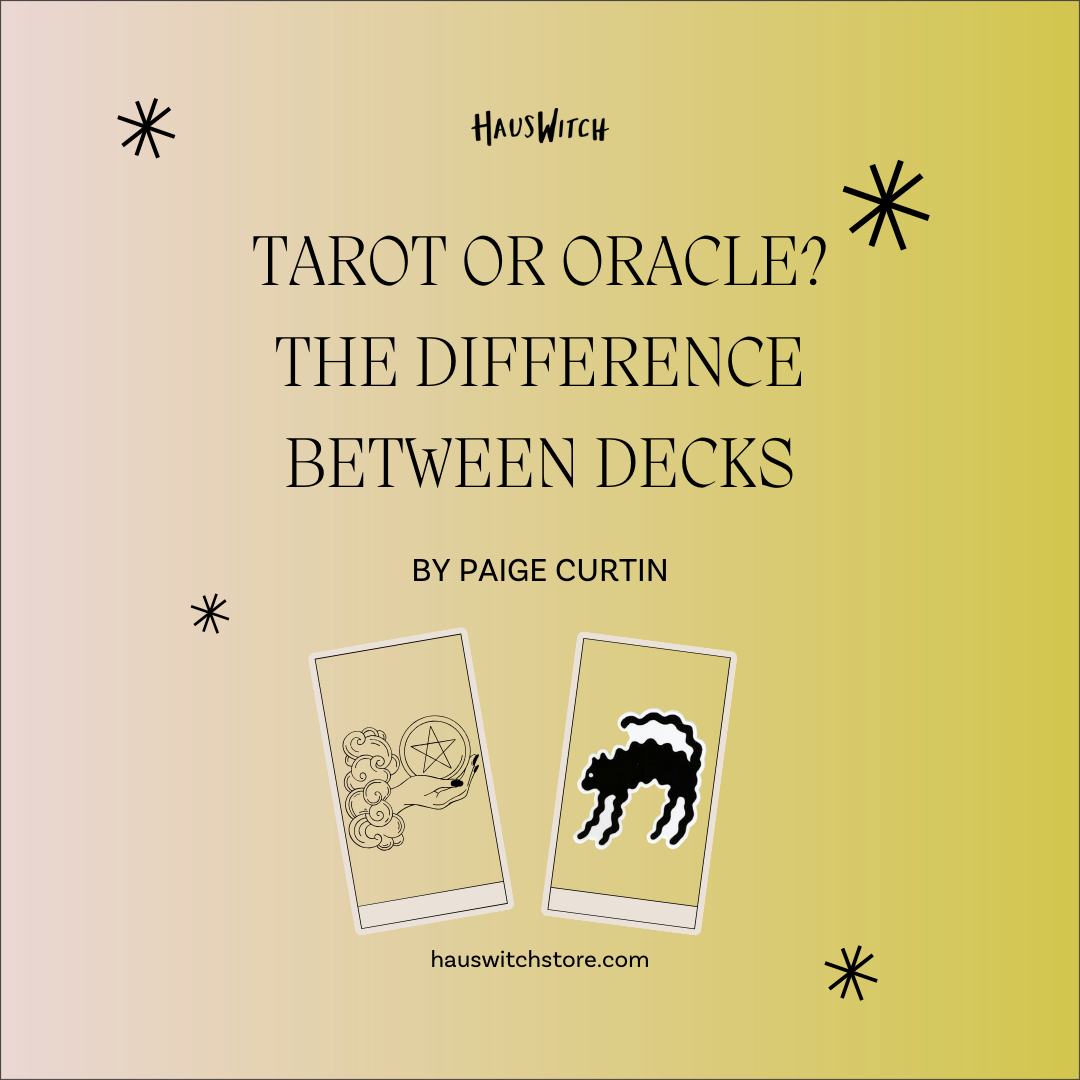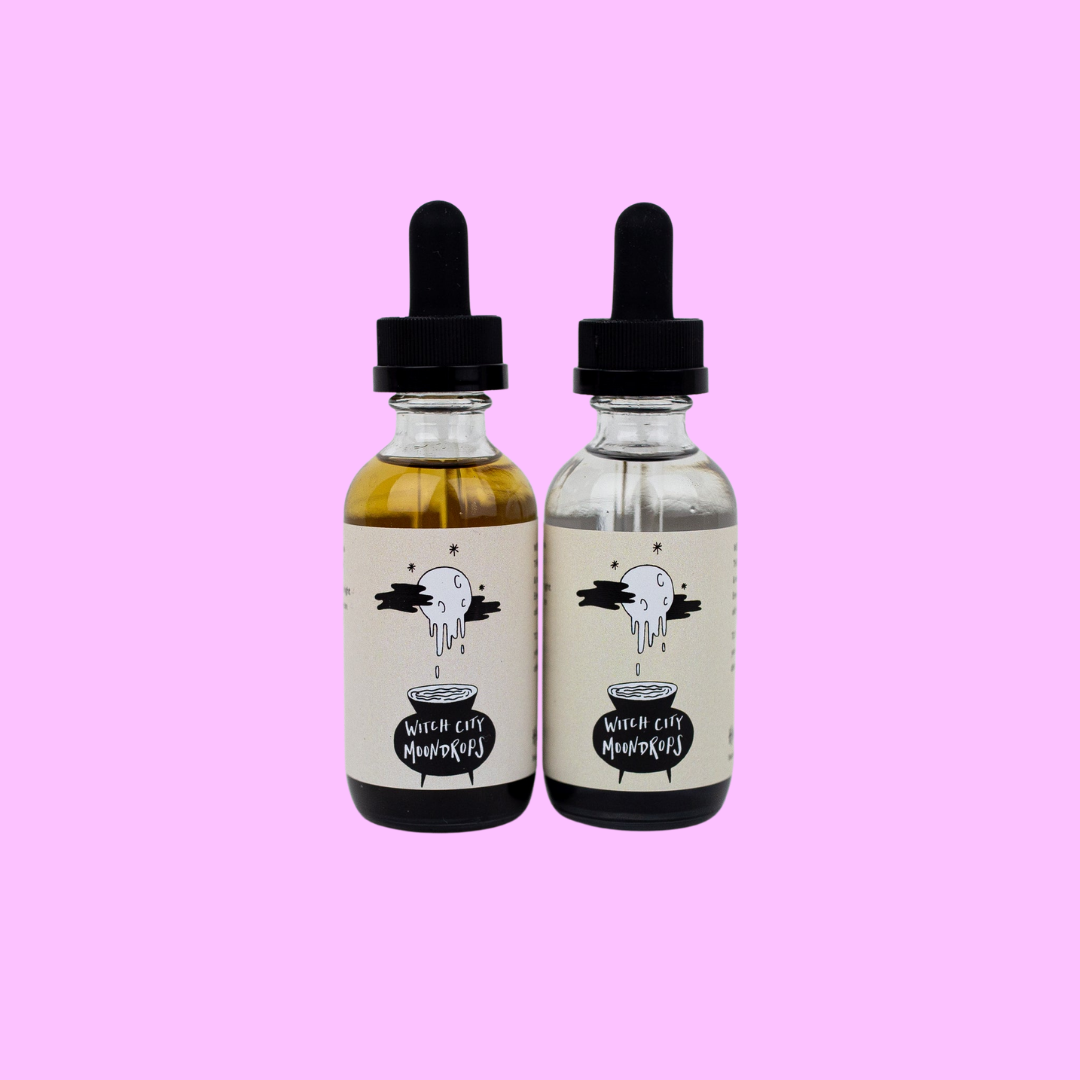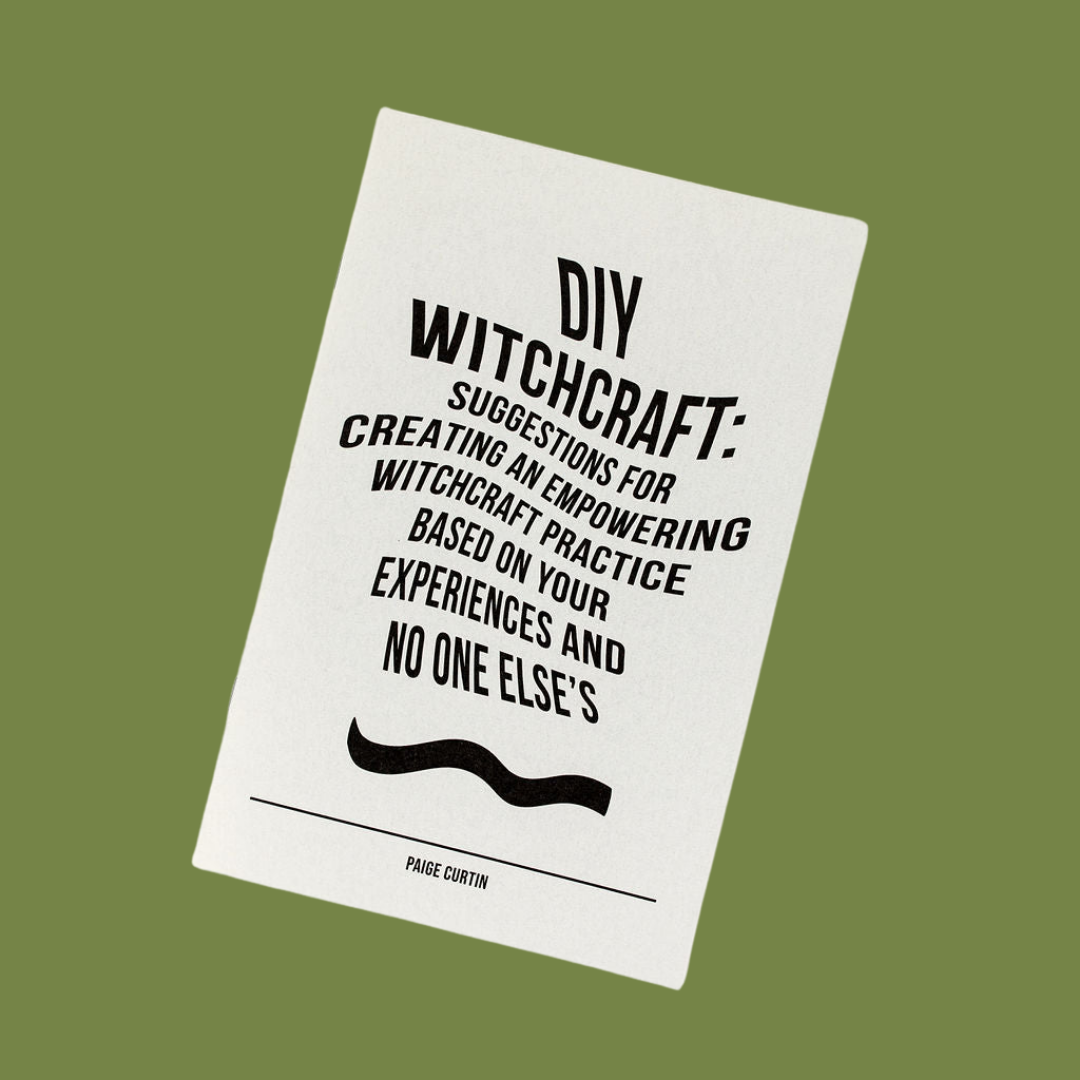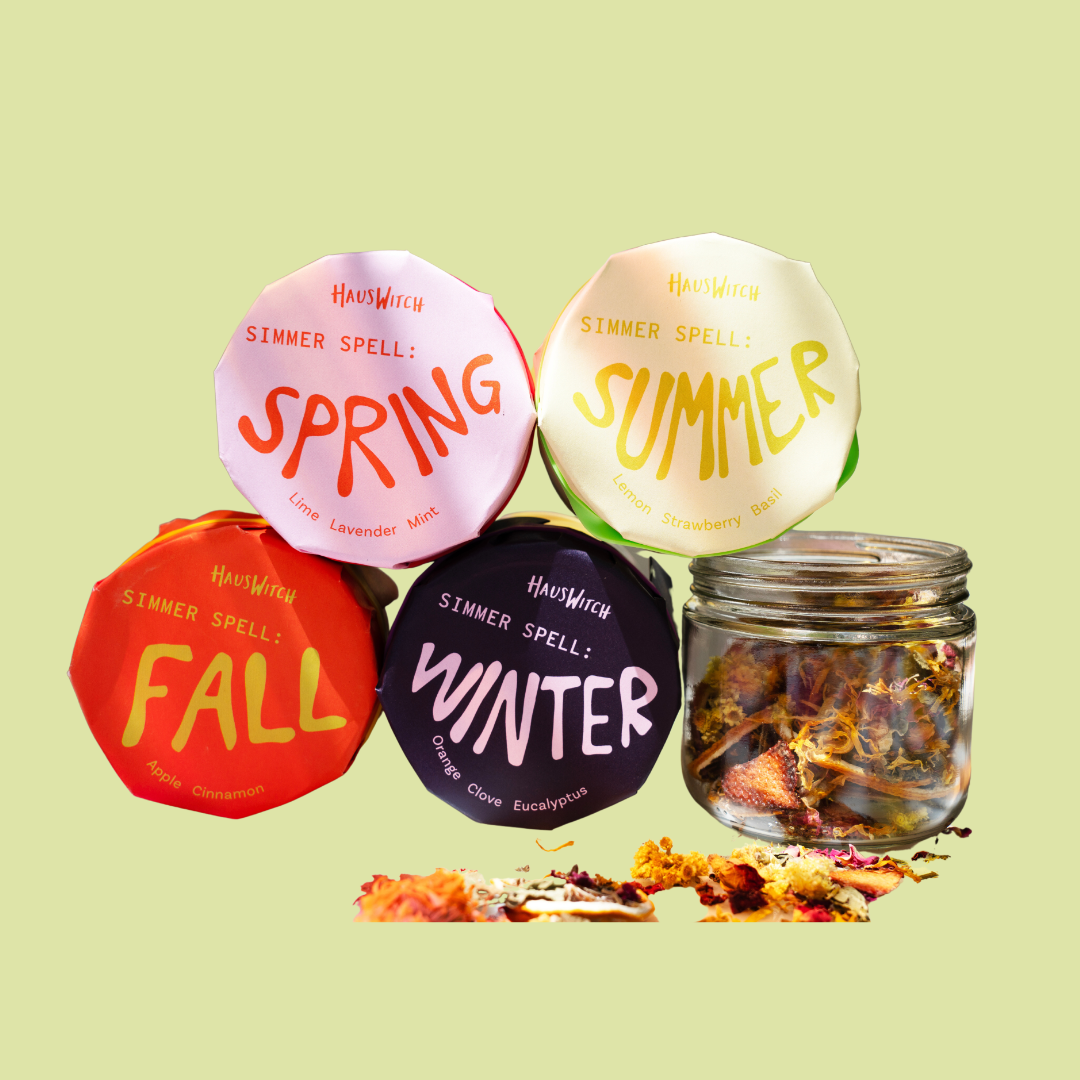If you're wondering, you're SO not alone! A question we get pretty often at The Treasure Palace is how oracle decks differ from tarot decks, and which one is easier to work with. Let's compare!
Tarot Decks

While there are a TON of different tarot decks by a ton of different artists, every tarot deck follows the same basic structure: 56 "minor arcana" cards and 22 "major arcana" cards (78 cards total).
The major arcana contains archetype cards like The High Priestess and Death, which illustrate major themes and concepts. The minor arcana deals in daily life and is similar to a common deck of playing cards, made up of 4 suits that contain number cards Ace (or 1) through 10, and 4 court cards. The standard suits are Wands (Clubs), Swords (Spades), Pentacles (Diamonds) and Cups (Hearts). Some tarot decks show coins instead of pentacles or apprentices instead of pages, some follow different themes entirely like 4 elements in place of the 4 suits, but that 4 suit/10 number/4 court structure is pretty universal.
Before they were used for divination, Tarot cards and their contemporaries were intended to be played with! Mystics will make magic out of anything though, and games like the Italian Scopa turned into a method of folk magic. Tarot as fortune telling and as a business is an especially big part of Romani culture, which you can learn more about in Secrets of Romani Fortune Telling by Jezmina Von Thiele and Paulina Stevens.
Pamela Colman Smith, the artist behind the iconic Smith Waite Deck, was really the first artist to give personality to the minor arcana rather than just focusing on the majors. Most tarot decks today are based on her symbolism, so we always say if you learn on a Smith Waite deck you can work with basically tarot any deck! Of course, there are thousands (maybe millions?!) of decks out there these days, and artists get creative with their own interpretations. Rachel Howe of Small Spells takes an effective minimalist approach to the cards, while Lisa Sterle goes totally modern. Queer Tarot is another reimagining of the Smith Waite deck, this time from a queer and trans POV featuring real life queer folks on each card!
That was a lot of information about Tarot decks, so I bet you're hoping oracle decks won't be as intricate! And for the purposes of this article, you're in luck.
Oracle Decks

Oracle decks don't follow one standard pattern like tarot decks do. Every oracle deck is different, themed by color, animal, historical figure, and every unnameable theme in between. You don't need to know the language of tarot to read an oracle deck!
Some have their own internal structures, like The Cat Oracle which is divided into "suits" based on Cat Behavior. Some are great for single-card guidance pulls, like The Seashell Oracle which reveals an oceanic touchstone that can help you deal with daily life. Some are super practical, like the decks from People I've Loved which guide the reader through grief, anxiety, relationships, and finding joy. Some are educational, like Sacred Symbols or The Missing Witches Deck of Oracles. The rules for oracle decks are pretty boundless, which is why it’s a little too easy to amass a huge collection!
So, does that answer the question? In a nutshell: Tarot decks all share the same structure. Oracle decks are more of a case-by-case deal. Both are fun and effective, and both are learnable as well as intuitive. Even tarot with its standardized symbolism can be interpreted by the most novice reader simply by looking at the cards and connecting with the illustrations. Sometimes total newbies even glean insights that experts never noticed! When folks ask which tarot deck is the best for beginners, we always say that as long as you choose a deck that you like looking at, you’ll be able to (and WANT to) work with it.





